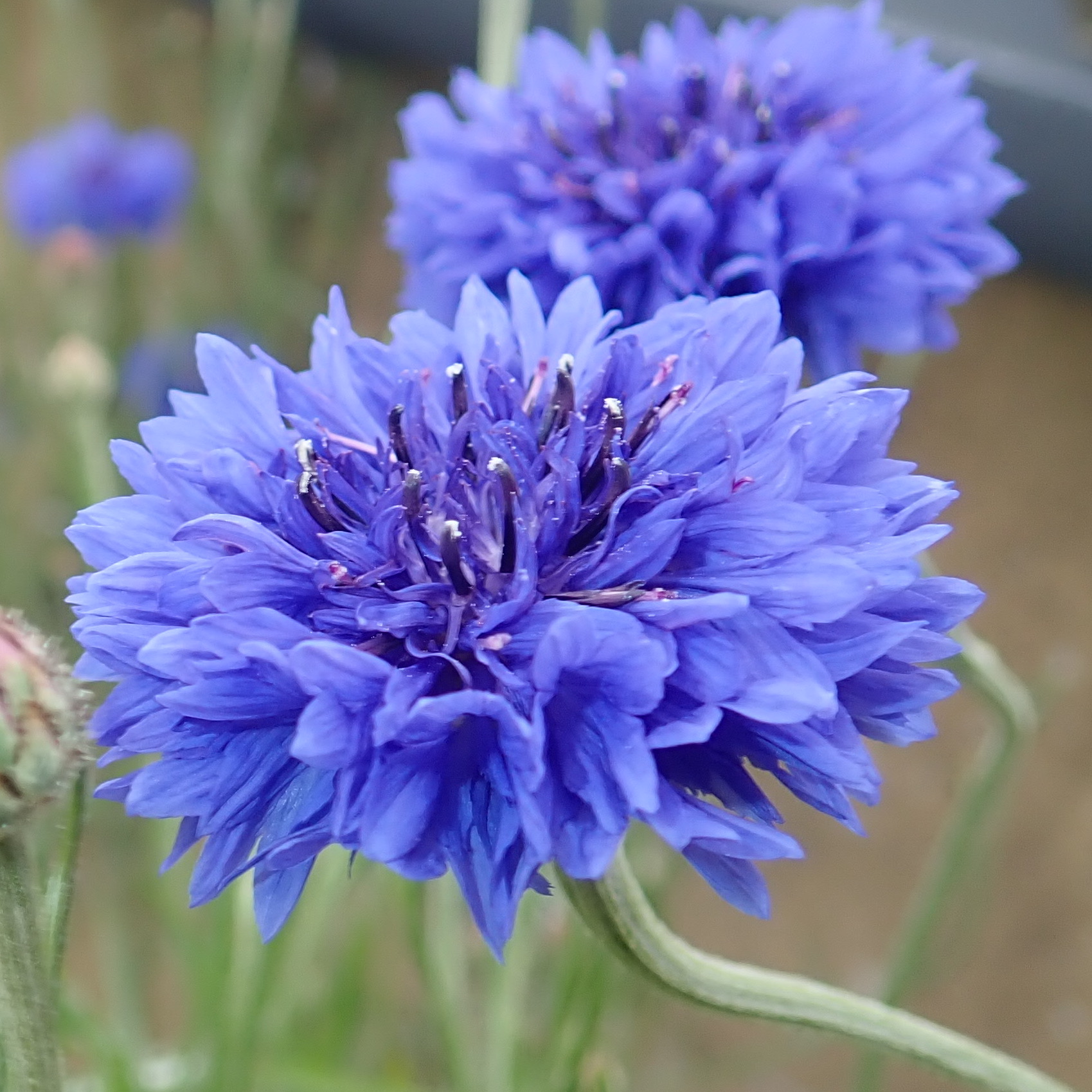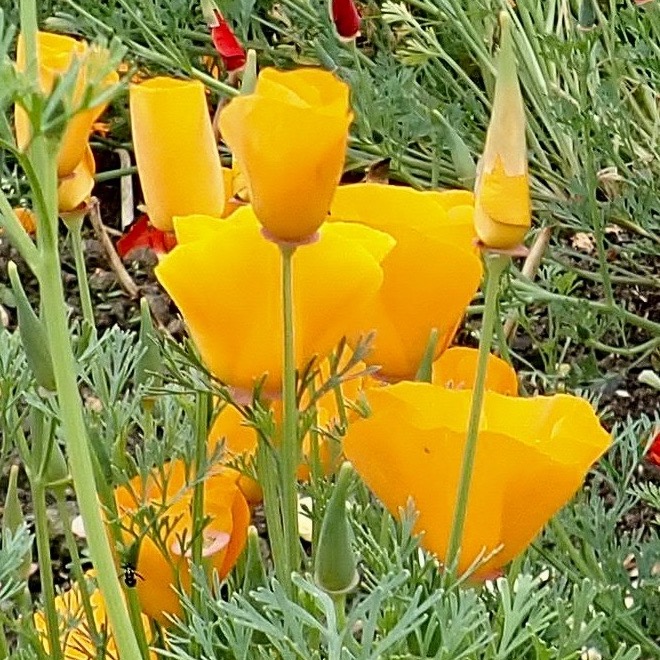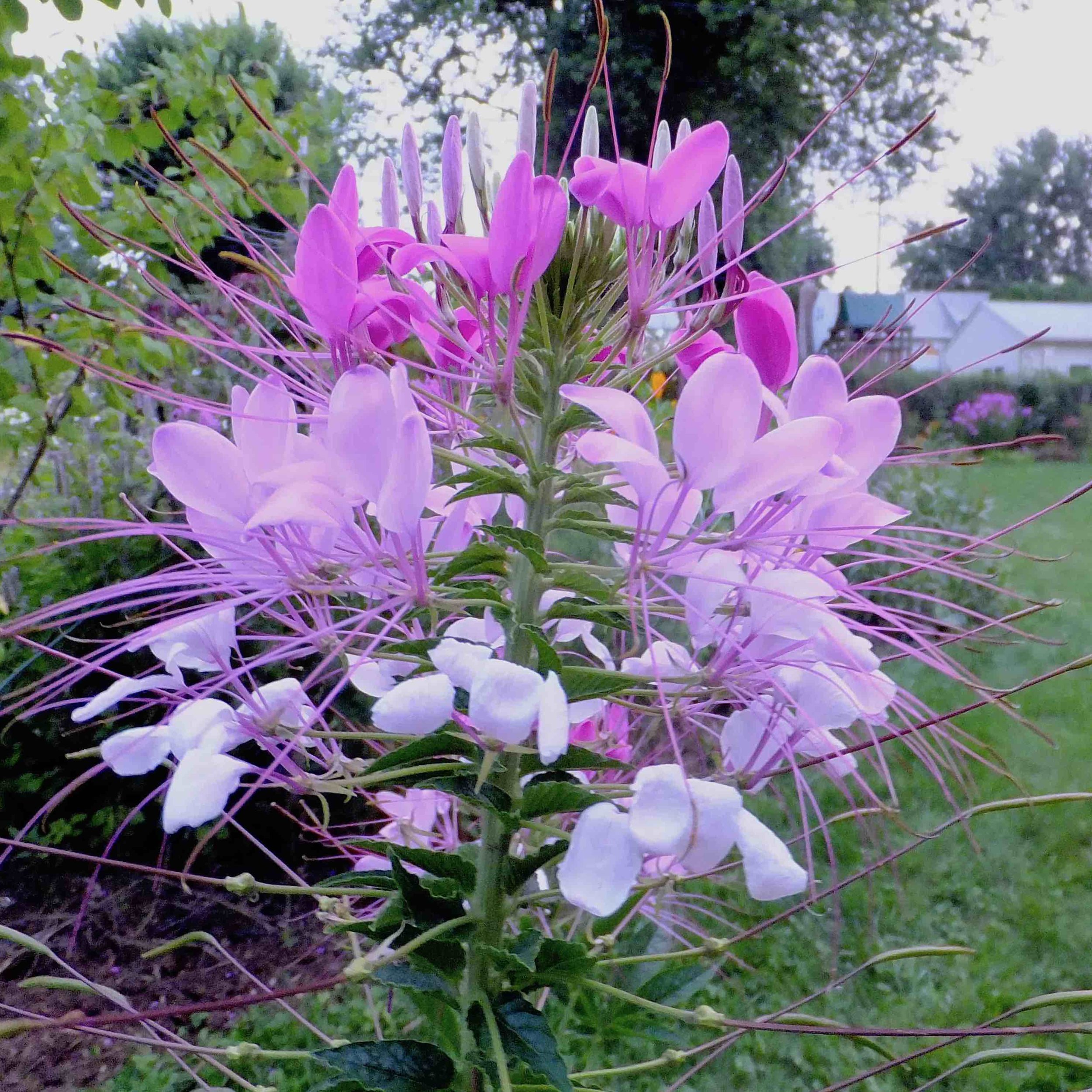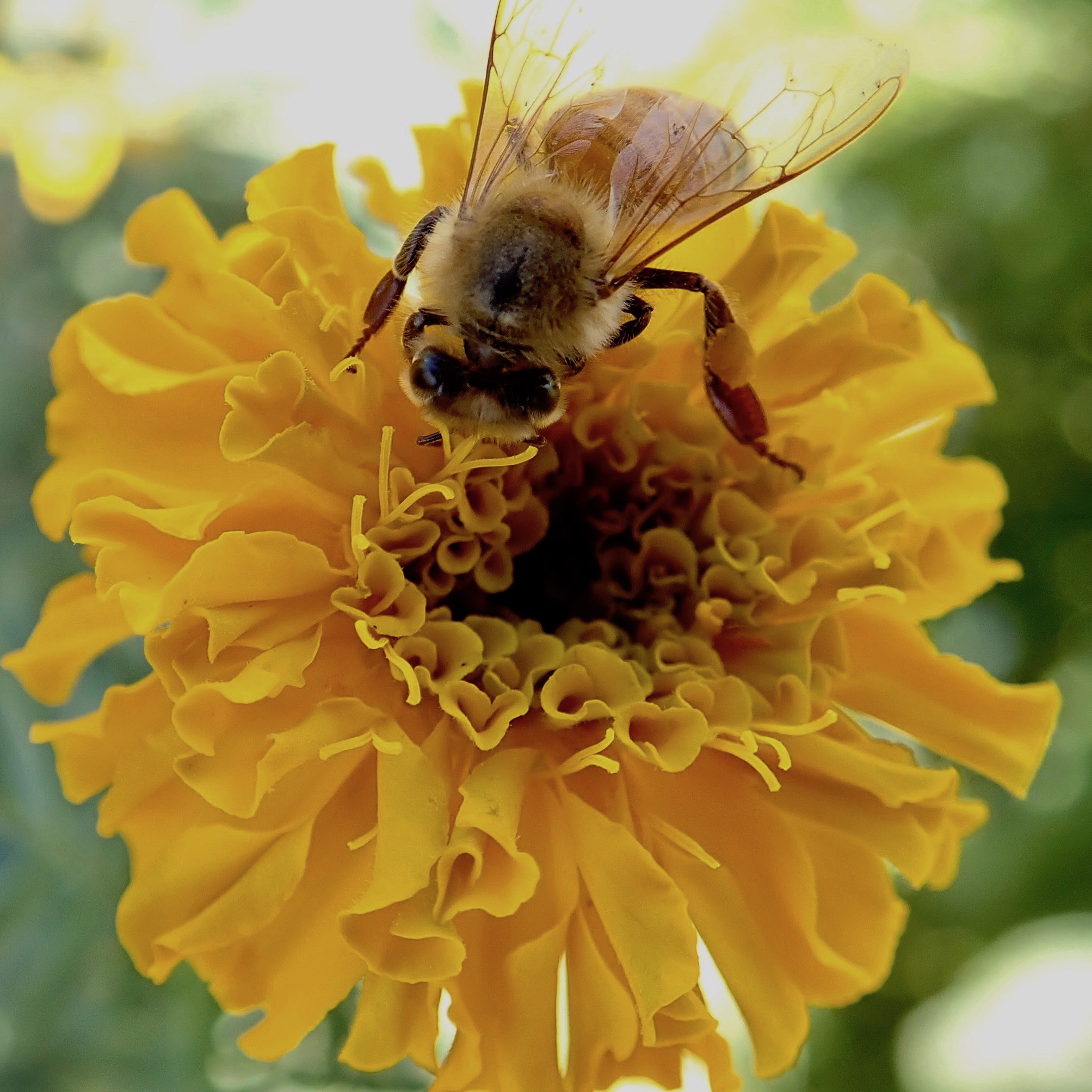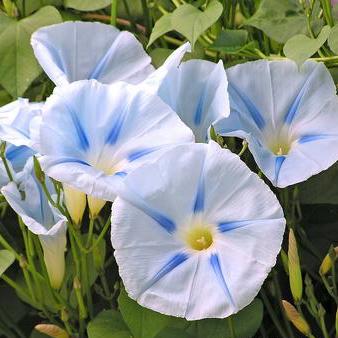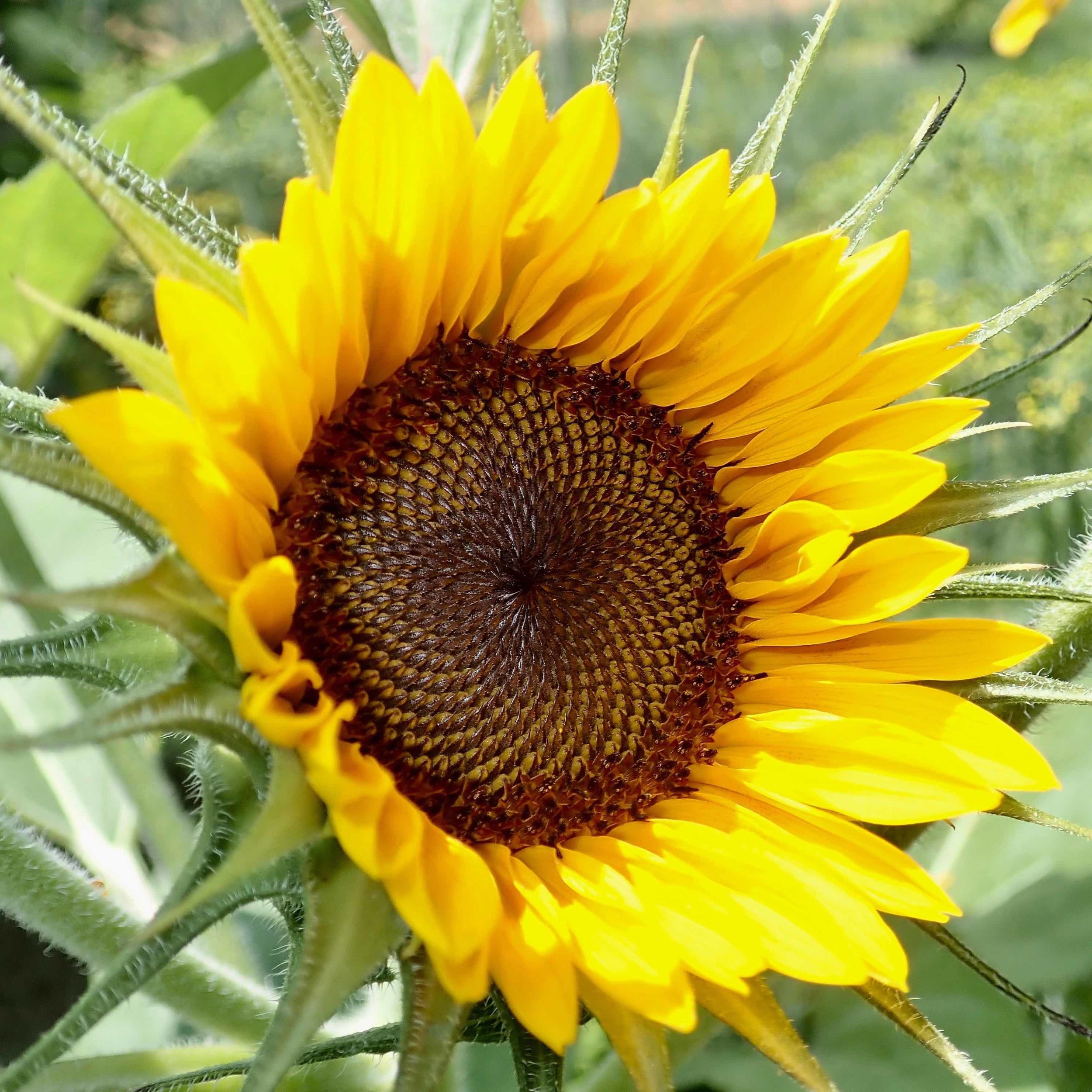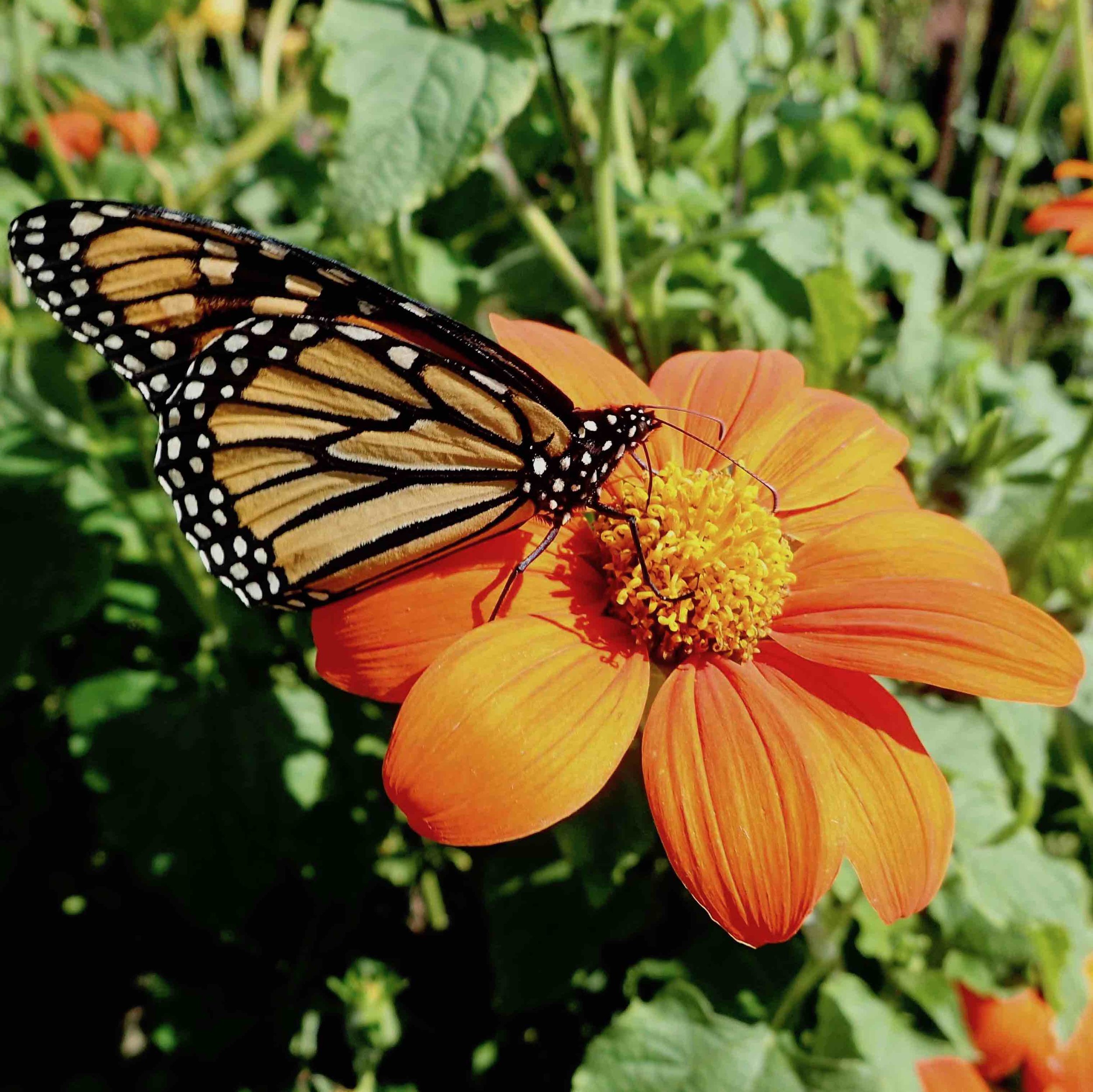Easy From Seed Flowers
Bachelor’s Buttons, Calendula, California Poppy, Cleome, Cosmos, Love-in-a-Mist, Marigold, Morning Glory, Nasturtium, Sunflower, Tithonia, Zinnia
Some flowers are not just easy to grow from seed, they actually perform better when sown directly in the garden. They will not suffer transplant stress, and many prefer to get their start in cooler spring weather.
Try it! You’ll have more flowers at less expense, and you’ll attract pollinators. Plus, it’s fun!
First, prepare a garden bed in full sun, loosening the soil and incorporating compost. Then, follow the guidelines below. In just weeks, you’ll have garden color and beautiful bouquets.
Bachelor’s Buttons (Centaurea cyanus) like cool weather. Sow the seed very early in spring, or if your winters are mild, in fall. They can grow to 3 feet in height, so be prepared to stake them. Pollinators love them.
Calendula (Calendula officinalis) can have two seasons of beauty—spring and fall. Start them in early spring and again in late summer. The petals are edible, and the flowers attract a variety of pollinators.
California Poppies (Eschscholzia californica) require good drainage, and grow well in poor to average soils. Sow the seeds early in spring, or if your winters are mild, in fall. The flowers’ abundant pollen attracts native bees. Allow a few seedheads to remain on the plants for self-sowing.
Cleome (Cleome hassleriana) seeds will germinate after all danger of frost has passed, so don’t rush to sow them. Most varieties will grow to 4 feet or more in height, and their strong stems do not need staking. The flowers attract various beetles, as well as flies and small bees.
Cosmos (Cosmos bipinnatus, C. sulphureus) thrive in heat. Sow seed after danger of frost has passed. Depending on the variety you choose, plants can grow from 18 to 60 inches in height. All types attract pollinators.
Love-in-a-Mist (Nigella damascena) is delicate in flower and has intriguing pods that can be dried and used in arrangements. It likes cool weather, so sow seeds outdoors in early spring.
Marigolds (Tagetes spp.) can grow to 8 inches or to 3 feet in height, depending on the variety you choose. Because they can take 2 months to flower from seed, you may want to start them indoors a month before your last frost. You can also sow seed directly in the ground after danger of frost. French marigolds, particularly, attract butterflies.
Morning Glories (Ipomoea purpurea) can climb 15 feet or more, so provide them with a trellis. Sow seeds after danger of frost, soaking them in water for 24 hours to speed germination. Numerous pollinators visit the flowers.
Nasturtiums (Tropaeolum majus) are not just beautiful and pollinator friendly, they are also tasty. Some varieties sprawl or trail, while others grow in a clump. Sow seeds after danger of frost, soaking them first for faster germination.
Sunflowers (Helianthus annuus) can be 2 feet tall, or they can be 12 feet tall, depending on the variety. There are also myriad color choices. Sow the seed after danger of frost, giving each plant plenty of space. Sunflowers are enormously popular with all kinds of pollinators
Tithonia (Tithonia rotundifolia), also known as Mexican sunflower, is vigorous and drought tolerant, and a favorite of butterflies and other pollinators. Plant the seeds after your frost date. Mature plants can be 6 feet tall by 3 feet wide.
Zinnias (Zinnia elegans) are easy to grow cutting flowers that come in a plethora of colors and sizes. The more you cut, the more they’ll flower. Sow seeds after danger of frost. Monarch butterflies and Painted Ladies love them!


